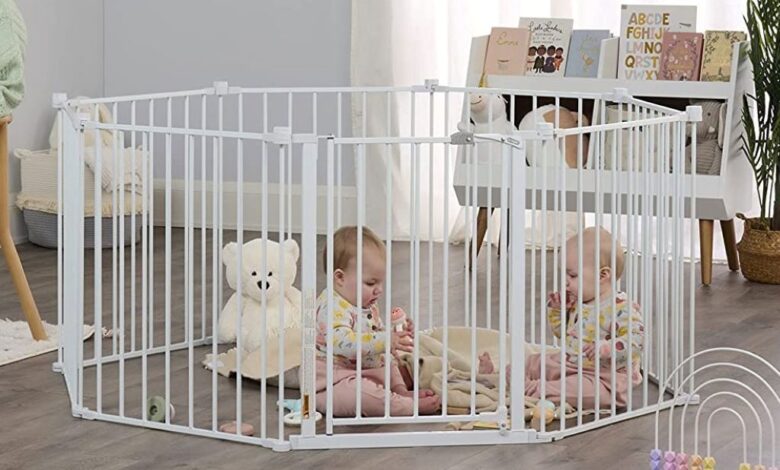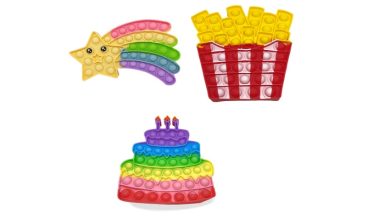What Is Baby Gates: Your Complete Guide to Child Safety

When it comes to keeping your little ones safe at home, baby gates stand as one of the most essential childproofing tools every parent needs. These protective barriers help create secure boundaries throughout your house, giving you peace of mind while your child explores their environment. At Confident Children, we understand that choosing the right safety equipment can feel overwhelming for new parents.
Baby gates serve as temporary barriers designed to restrict a child’s access to potentially dangerous areas like stairs, kitchens, or rooms with hazards. They’re typically installed in doorways, at the top or bottom of staircases, and in wide openings to create safe zones for your growing toddler. While discussing home safety, many parents also wonder about monitoring technology, such as what is vox on baby monitor, which helps keep track of their child’s activities remotely.
Understanding the different types of baby gates available will help you make informed decisions about which options work best for your specific needs and home layout.
Types of Baby Gates Available
Baby gates come in several varieties, each designed for different situations and installation requirements. Hardware-mounted gates offer the most secure option, as they screw directly into walls or doorframes. These gates work perfectly for stair tops where maximum security is crucial.
Pressure-mounted gates use spring-loaded mechanisms to stay in place without permanent installation. They’re ideal for doorways and areas where you need temporary barriers that won’t damage your walls or trim.
Retractable gates operate like window shades, rolling out when needed and retracting when not in use. These gates work well in wide openings where traditional swinging gates might be impractical.
Walk-through gates feature doors that adults can open and close while keeping children contained. These gates prove especially convenient in high-traffic areas where you frequently need to pass through.
Key Features to Consider
When selecting baby gates, several important features deserve your attention. Height matters significantly, as most effective gates measure between 29 and 32 inches tall. This height prevents most toddlers from climbing over while remaining manageable for adults.
Width adjustability allows one gate to fit multiple openings in your home. Look for gates that expand to accommodate your doorways and hallways without gaps that small children could squeeze through.
Locking mechanisms should be easy for adults to operate but complex enough to stump curious toddlers. Single-hand operation proves particularly valuable when you’re carrying a child or other items.
Material quality affects both durability and appearance. Wood gates blend well with home decor, while metal options often provide superior strength. Plastic gates offer lightweight alternatives but may not withstand heavy use.
Installation and Safety Guidelines
Proper installation ensures your baby gates function effectively and safely. Always read manufacturer instructions completely before beginning installation, as each gate type has specific requirements.
For hardware-mounted gates, use appropriate screws and anchors for your wall type. Drywall installations require wall anchors rated for the gate’s weight capacity. Never install hardware-mounted gates using pressure alone.
Pressure-mounted gates need sufficient friction against walls to stay secure. Check that rubber pads make full contact with surfaces and adjust tension according to manufacturer specifications.
Regular maintenance keeps gates functioning properly over time. Inspect mounting hardware monthly for looseness or wear. Clean moving parts to prevent sticking that could affect proper closure.
Test your gates regularly by gently pushing and pulling to ensure they remain secure. Replace any gates showing signs of wear, damage, or loosened connections immediately.
Where to Install Baby Gates
Strategic placement maximizes your baby gates’ effectiveness throughout your home. Stairways represent the most critical installation points, requiring hardware-mounted gates at both top and bottom positions.
Kitchen entrances benefit from baby gates, as kitchens contain numerous hazards including hot appliances, sharp objects, and cleaning chemicals. Gates allow you to cook while keeping children safely away from dangers.
Bathroom doorways need gates to prevent access to water hazards, medications, and cleaning products. Consider gates with easy adult access for emergency situations.
Home offices and craft rooms often contain small objects, electrical equipment, or valuable items that could harm children or suffer damage from curious hands.
Basement and garage entrances require secure barriers, as these areas typically contain tools, chemicals, and other hazardous materials inappropriate for children.
Benefits Beyond Basic Safety
Baby gates provide advantages extending beyond immediate safety concerns. They help establish boundaries and routines, teaching children about limits in a gentle, consistent manner.
Parents gain increased freedom to complete household tasks without constant worry about their child’s whereabouts. This peace of mind reduces stress and allows for more relaxed family environments.
Gates preserve valuable or fragile items by keeping children away from entertainment centers, bookshelves, and display areas. This protection saves money on replacements and reduces frustration.
Sleep routines improve when children understand bedroom boundaries. Gates can help maintain nap schedules and bedtime routines by preventing wandering during rest periods.
Choosing the Right Gate for Your Needs
Consider your specific circumstances when selecting baby gates for your home. Families with multiple children might need wider gates or multiple barrier systems to manage different age groups effectively.
Rental properties often require pressure-mounted options to avoid wall damage. Check with landlords about installation restrictions before purchasing hardware-mounted gates.
Pet owners should consider gates that work for both children and animals. Some gates include pet doors or height options that accommodate family pets while containing children.
Budget considerations affect gate selection, but remember that quality gates provide better long-term value through durability and reliable safety performance.
Maintenance and Longevity
Proper care extends your baby gates’ useful life and maintains safety standards. Regular cleaning prevents buildup that could interfere with proper operation or create hygiene concerns.
Lubricate moving parts according to manufacturer recommendations to ensure smooth operation. Avoid using petroleum-based products that might attract dirt or become sticky over time.
Store removable gates properly when not in use to prevent damage from impacts or weather exposure. Keep all hardware together to avoid losing essential components.
Document installation dates and inspect gates more frequently as they age. Most quality gates provide several years of reliable service with proper maintenance.
Conclusion
Baby gates represent essential safety equipment that helps protect your children while giving you greater peace of mind throughout your home. By understanding the different types available, key features to consider, and proper installation techniques, you can create effective barriers that keep your little ones safe without compromising your home’s functionality. Remember that the best baby gate is one that fits your specific needs, installs securely, and receives regular maintenance to ensure continued protection. Investing in quality gates and taking time for proper installation creates a safer environment where your children can explore and grow confidently.
Frequently Asked Questions
What age should I start using baby gates? Most parents install baby gates when children begin crawling or pulling themselves up, typically around 6-10 months old. Gates remain useful until children reach 24-36 months and can understand safety rules consistently.
Can I use pressure-mounted gates at the top of stairs? No, never use pressure-mounted gates at stair tops. These locations require hardware-mounted gates that screw into walls or banisters for maximum security. Pressure-mounted gates could fail under pressure and cause serious falls.
How do I measure for the right gate size? Measure the width of your opening at its narrowest point, then add 2-3 inches to ensure proper fit. Most adjustable gates accommodate ranges like 29-32 inches or 28-42 inches wide.
What’s the difference between indoor and outdoor baby gates? Outdoor gates use weather-resistant materials and coatings to withstand moisture and temperature changes. Indoor gates prioritize appearance and may use materials unsuitable for outdoor conditions.
How long do baby gates typically last? Quality baby gates can last 3-5 years with proper care and maintenance. Replace gates immediately if you notice loose hardware, bent frames, or compromised locking mechanisms.
Read More:
What Are The Advantages Of Purchasing High-End Clothing For One’s Children?
Why a stroller makes things convenient for you and the child!





